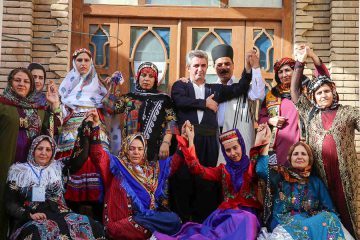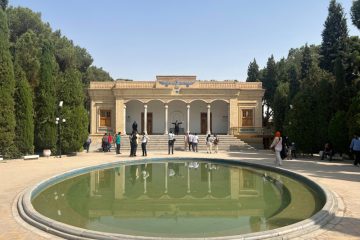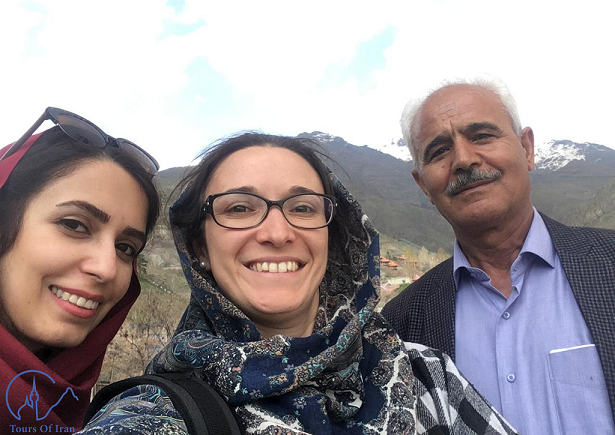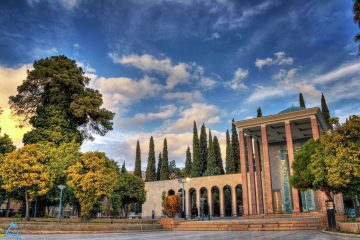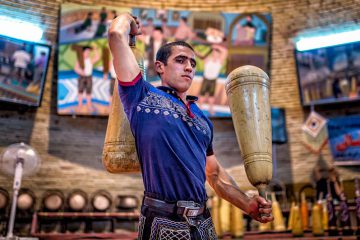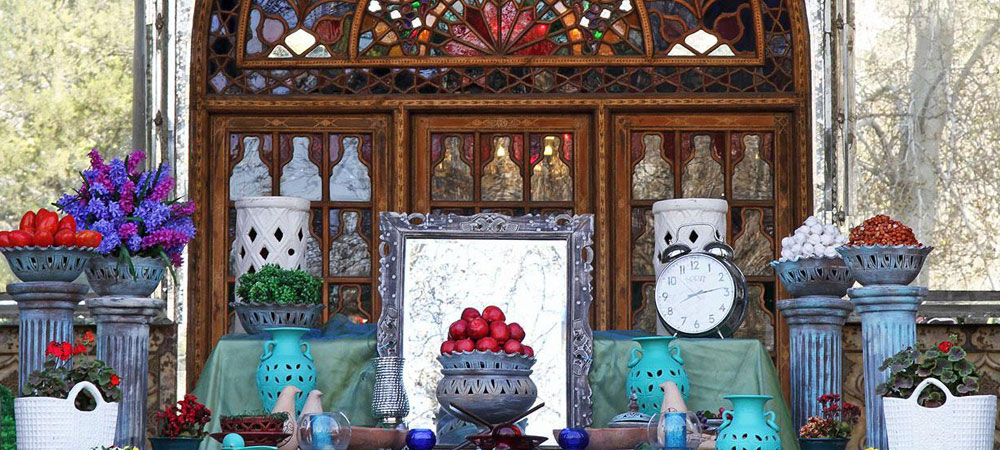
NOWRUZ THE IRANIAN NEW YEAR
Nowruz, marking the start of spring in the northern hemisphere, is the Iranian New Year celebration. “Nowruz” roughly translates to “new day,” symbolizing a fresh start rather than just a single day. It begins with the moment when the Sun crosses the celestial equator, bringing equal lengths of day and night. However, the 13-day festivities of Nowruz are not tied to celestial events; rather, they celebrate the renewal of life and nature on Earth.
For over 3,000 years, Iranians have celebrated this day, originating from a Zoroastrian feast that marked the victory of light over winter darkness with the arrival of spring. This joyous occasion continues to fill the nation with cheer, akin to the festive spirit of Christmas in Western cultures, casting an enchanting spell that uplifts every aspect of Iranian life, making people more joyful.
Nowruz is celebrated uniquely in different parts of Iran, reflecting the diverse ethnic communities within the nation. Each region has its customs, gatherings, songs, and dances for the occasion. Iranians happily embrace these variations. During the 13-day Nowruz holiday, many Iranians travel across the country to experience the diverse and exotic celebrations in various regions.
Who celebrates Nowruz?
Despite its Iranian origins, over 300 million people influenced by Iranian civilization throughout history observe this day.
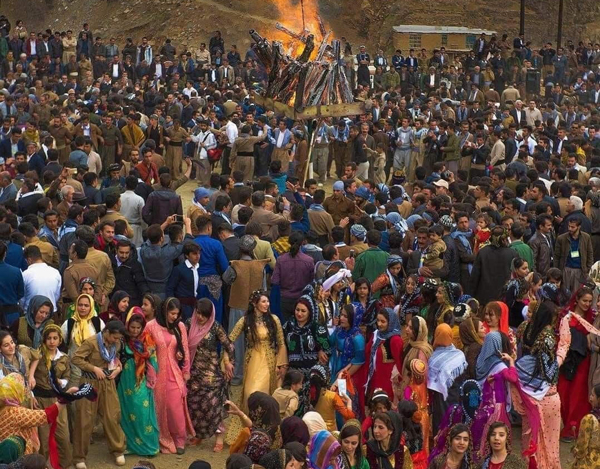
Countries and Regions Celebrating Nowruz
In recent times, Iranian communities in Western countries have begun publicly celebrating the Iranian New Year. Additionally, in 2016, Nowruz was celebrated at the UN headquarters after UNESCO, the cultural arm of the United Nations, designated “International Nowruz Day” on its Representative List of the Intangible Cultural Heritage of Humanity.
It’s time to travel to Iran from Europe
How It’s Celebrated
While the exact moment of the Iranian New Year’s arrival is precisely determined, the festivities begin days beforehand and are not strictly defined. The celebration involves a series of preparations for the new year, along with rituals and customs for the eve of Nowruz and the following days. These customs differ across regions and are influenced by the religious beliefs and local customs of each ethnic group. In some areas, celebrations may include public gatherings and traditional dances. Although merrymaking is common among Nowruz celebrants, the specific activities and their scale vary. However, they generally follow the pattern outlined below:
Khane Tekani
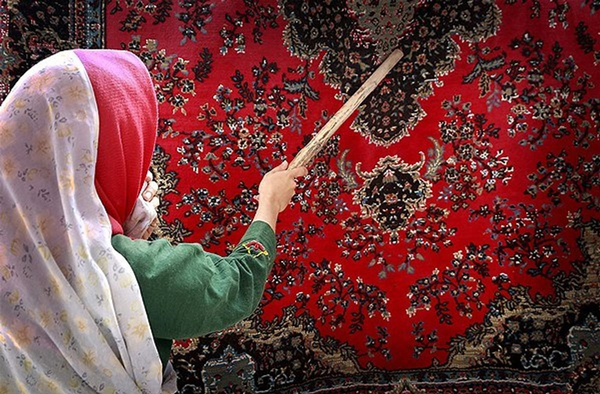
For Iranians, Nowruz often starts with a traditional home-cleansing ritual known as “Khane Tekani,” which translates to “shaking the house.” This involves thorough cleaning and dusting of the home. The belief is that the state of the house at the beginning of the new year sets the tone for the year ahead. Therefore, Khane Tekani is seen as a way to ensure a clean and healthy household for the upcoming year.
Remembrance of the Departed
Another tradition is to visit the graves of deceased relatives, particularly among the religious community. This act of remembrance typically takes place on the last Thursday of the year. Iranians especially adhere to this custom for those who passed away in the preceding year, as a way to honor their memory. The ritual often involves cleaning the gravestones, placing flowers, and offering prayers for the departed.
Haft-Sin
On the day preceding Nowruz, every family arranges a special table known as “Haft-Sin” (literally, “The Seven S”). Gathered around this table in new attire, they await the precise moment of the vernal equinox to usher in the New Year. The contemporary interpretation of Haft-Sin is quite straightforward: it consists of seven items, each beginning with the Persian letter “sin” (س), which are:
Sabze – Sprouted wheat, barley, mung beans, or lentils grown in a dish.
Samanu – A sweet pudding made from wheat germ.
Persian Olive – Senjed.
Vinegar – Serke.
Apple – Sib.
Garlic – Sir.
Sumac – Somāq.
Haft-Sin Table
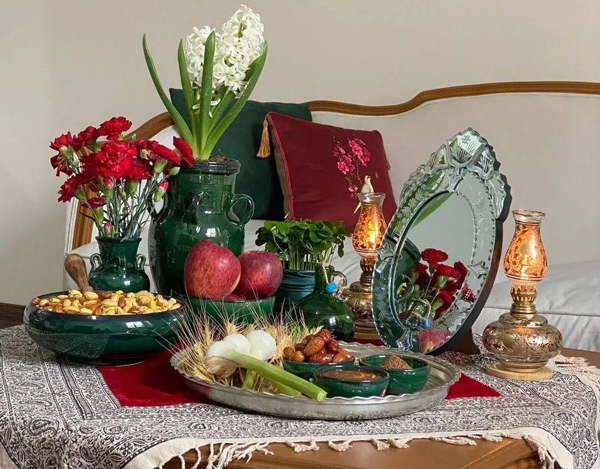
The Haft-Sin tableau gleams with an enchanting ensemble of elements: a looking glass, flickering candles, ornate eggs, a vessel of water, gliding goldfish, jingling coins, fragrant hyacinth blooms, and delectable confections steeped in tradition. Many also place a “book of wisdom” such as the Quran, Bible, Avesta, the Šāhnāme of Ferdowsi, or the divān of Hafez on the table, reflecting the family’s religious or political leanings. The choice of containers and decorations reflects the family’s artistic taste and economic status. While the modern composition of Haft-Sin emerged over the past century, its roots trace back to the seven Ameshasepantas mentioned in the Zend-Avesta, the holy scripture of Zoroastrians.
Amu Nowruz and Haji Firuz
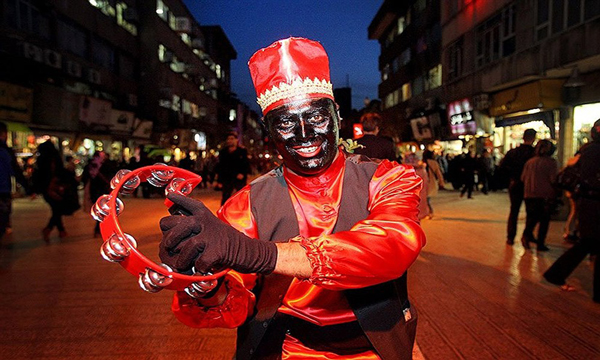
In Iran, Amu Nowruz and Haji Firuz are traditional figures of the New Year festival who entertain the public in the streets. Amu Nowruz is akin to Iran’s version of Santa Claus, bringing gifts to children. While the role of Amu Nowruz has diminished in recent decades and is rarely performed nowadays, his companion, Haji Firuz, has become a national icon. Haji Firuz is a comedic character, his face and hands smudged with soot, clad in bright red attire. He dances through the streets, singing with a humorous voice and playing the tambourine to lift people’s spirits.
Sizdah Be-Dar
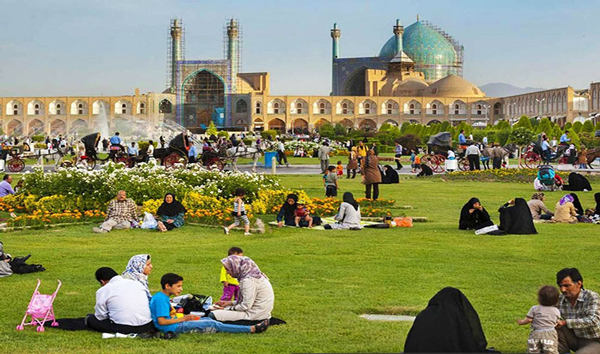
During the 12-day Nowruz celebration, families and friends visit each other’s homes, exchanging greetings and well wishes for the new year (“Nowruz Mubarak”). However, on the 13th and final day, known as Sizdah Be-Dar, people traditionally go on picnics in public parks or natural settings. This tradition is believed to ward off any bad luck associated with the number 13. Despite common beliefs, the origins and rituals of Sizdah Be-Dar stem from Zoroastrianism, where it was a day to honor Tishtar, the god of rain.
As the concluding event of Nowruz, Sizdah Be-Dar holds significant importance, with special foods, activities, and ceremonies. To learn more about this special day, its history, and related customs, check out our dedicated article.
Nowruz Food and Cuisine
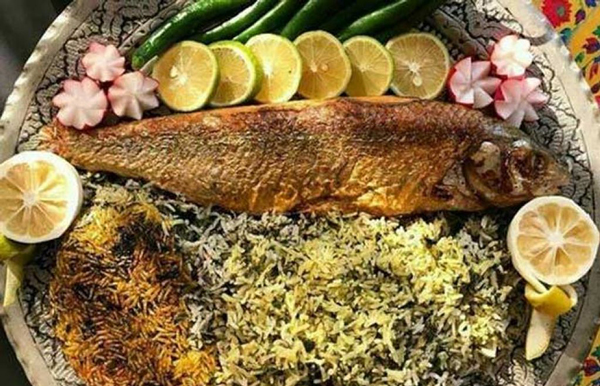
One of the most emblematic dishes prepared for Nowruz is Samanu. This dish is made using wheat germ, and various ethnic groups have specific rituals associated with its preparation. In different regions of Iran, Afghanistan, Tajikistan, Turkmenistan, and Uzbekistan, women and girls often gather to cook Samanu together, sometimes even during nighttime, accompanied by traditional songs. However, in modern times, especially in larger cities, many people no longer observe these ceremonies and purchase Samanu from grocery stores.
Other dishes are also commonly prepared for Nowruz, varying based on local customs and regional traditions. For instance, in Iran, serving Sabzi polo (rice with green herbs) alongside fish on the eve of Nowruz is considered a significant tradition, akin to a religious decree. Similarly, Reshteh Polo (rice with thin noodles) served with chicken is often enjoyed as the first meal of Nowruz.
In Afghanistan, there’s a dish called Haft-Meiwa, which consists of a mix of dried seeds and fruits served with syrup, and it holds similar significance.
Nowruz is celebrated by people of various religions, but it is most prominent in certain Muslim-majority countries. Understanding Nowruz in Islam requires awareness of the differences between Shia and Sunni sects. In Shia Islam, which has historical ties with Iranian culture, Nowruz is celebrated as a holy day and is sometimes regarded as the Day of the Covenant, symbolizing God’s pact with humanity to worship Him and follow His prophets. However, in Sunni Islam, Nowruz is often viewed as a paganistic observance, and some consider it to be Haram (forbidden).
During the Nowruz holidays, Iran is excited, making it an ideal time to explore the country’s attractions. Whether you’re interested in cultural festivities or natural wonders, there’s something for everyone to enjoy. The festive atmosphere and pleasant spring weather add to the charm of your visit. Depending on your preferences, the best destination may vary. Reach out to us at Tours of Iran for tailored tour options that suit your interests and preferences.


